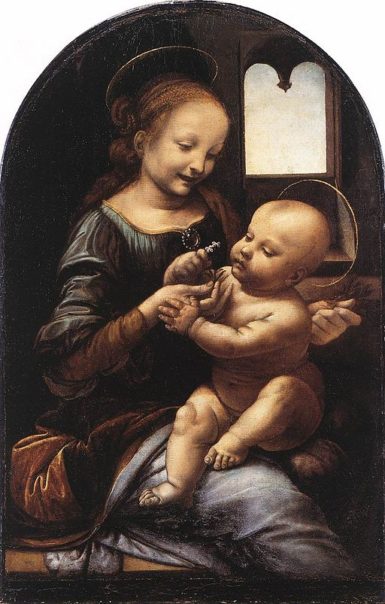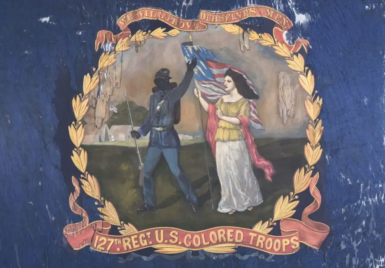[ad_1]

“Angry Trump Baby” at a London protest in 2018.
MACH PHOTOS/SHUTTERSTOCK
“Art En Route” is a biweekly column offering a rundown of some of the most notable acquisitions, loans, and sales in the news cycle.
One of the most iconic protest-related objects in recent years may be headed to an art museum. The Museum of London has expressed interest in exhibiting the “Angry Trump Baby” balloon that has been flown over the English capital by protesters during the U.S. president’s visits to the city in early June. Last year, campaigners crowdfunded £18,000 to fund the floating work, which is 20 feet tall.
The institution’s director, Sharon Ament, has said she also wants to display the balloon meant to resemble London mayor Sadiq Khan. “They’re both really important and of their time,” she told the BBC of the inflatables. Plans haven’t been formalized yet to show the work, though, and it remains to be seen whether these massive pieces will make it into the galleries of the Museum of London, whose programming focuses on the city’s history, from prehistoric times to the present.
A large-scale sculpture is also headed to New York. Kehinde Wiley’s bronze piece Rumors of War—which depicts a black man, dressed in streetwear, seated atop a horse—will come to Times Square this fall, ahead of its installation at its permanent home, at the entrance to the Virginia Museum of Fine Arts in Richmond. In a statement, the artist said of the piece, “The inspiration for Rumors of War is war—is an engagement with violence. Art and violence have for an eternity held a strong narrative grip with each other. Rumors of War attempts to use the language of equestrian portraiture to both embrace and subsume the fetishization of state violence.”
Meanwhile, 11 tabots (Christian plaques) may be on their way out of London. The British Museum is reportedly considering temporarily returning these objects to Ethiopia by way of a longterm loan. The tabots were taken by British troops after the 1868 Battle of Magdala, and they are thought to be kept in a sealed storage room at the British Museum, according to the Art Newspaper. The Ethiopian Orthodox Church has said it believes that the tabots are sacred objects that should only be viewed by its priests.
The repatriation news continues across the pond. The Iraqi Ministry of Culture, Tourism, and Antiquities has announced that plans to recover thousands of objects from the United States, including artifacts at Cornell University in Ithaca, New York, and the University of Pennsylvania in Philadelphia. The country’s minister of culture, Abdul Amir Al-Hamdani, also said that Iraq will reclaim pieces currently held at museums in Turkey and Lebanon.

Leonardo da Vinci, The Benois Madonna, 1478–80, oil on canvas.
CREATIVE COMMONS
With museums preparing to celebrate the 500th anniversary of Leonardo da Vinci’s death this fall, a few institutions are beginning to organize important loans of the artist’s work. Two pieces belonging to the State Hermitage Museum in St. Petersburg are set to travel to three Italian institutions. The Benois Madonna (1478–80) is headed to the Bruno Molajoli Civic Art Gallery in Fabriano, and later this summer it will go on view at the Galleria Nazionale dell’Umbria in Perugia. The Little Madonna (ca. 1495) is going to the Museo Poldi Pezzoli in Milan, where it will figure in an exhibition on the artist’s Milanese contemporaries due to open in November.
But the Louvre in Paris is set to have the biggest Leonardo show, with a full-fledged blockbuster due to open in October. The Art Newspaper reported that the museum is having trouble securing loans for the exhibition. It’s taken more than four years to assemble the works traveling to the exhibition, and the Louvre has requested to showcase Salvator Mundi (ca. 1500) and The Benois Madonna from St. Petersburg, as well as pieces from the Vatican, the Royal Collection in the United Kingdom, the Kunsthistorisches Museum in Vienna, and institutions in Germany. A number of drawings from Venice, Rome, Turin, and Parma are set to travel to Paris for the show. Among the most notable works that will not appear in the show: the Gallerie dell’Accademia di Venezia’s famed Vitruvian Man (1490).
In other Renaissance-related news, the Getty Museum in Los Angeles said earlier this month that it acquired Northern Renaissance artist Veit Stoss’s wooden sculpture Corpus Christi (ca. 1490). Alongside that announcement came news that the museum will add Joseph Wright of Derby‘s painting Two Boys with a Bladder (1769–70)—which has not been exhibited since the 18th century—to its holdings. The latter acquisition is subject to an export license from the Arts Council England, which the seller’s representative, Lowell Libson and Jonny Yarker Ltd., London, is applying for on behalf of the Getty.
Prime examples of Jane Freilicher’s soothing, contemplative paintings have been scattered around the United States, thanks to four institutional acquisitions. Early New York Evening (1954) has gone to the Whitney Museum in New York; the San Francisco Museum of Modern Art acquired Still Life on a Balcony (1987); Nude on Green Blanket (1967) went to the Addison Gallery of American Art in Andover, Massachusetts; and Peonies on a Table (1954) now resides at the Grand Rapids Art Museum in Michigan.
The Princeton University Art Museum picked up some 5,000 drawings by the late architect and designer Michael Graves, who was a professor at the university for almost 40 years; his renderings of structures range from sleek to sumptuous. And the Art Gallery of Ontario in Toronto purchased 3,500 photographs from the Caribbean islands for $300,000. The works—which run the gamut from postcards to daguerreotypes—date from 1840 to 1940, and will be shown in a 2021 exhibition at the museum.

Regimental flag of the 127th United States Colored Troops (USCT).
COURTESY ATLANTA HISTORY CENTER
The Atlanta History Center in Georgia has purchased a rare Civil War artifact at auction. It bought the flag of African American regiment that fought in the war for $196,800. Fewer than 25 flags of this kind exist, and this particular banner depicts, on one side, a black soldier carrying a rifle and waving goodbye to the mythical goddess of liberty. The alternate side shows a bald eagle and the motto “E pluribus unum.” The museum hopes to begin exhibiting the flag on July 1.
Finally, the Art Institute of Chicago will deaccession more than 300 Chinese artworks, putting them up for auction at Christie’s New York branch in September. The museum previously sold 22 Chinese jade pieces from its collection at Sotheby’s in May, and proceeds from the upcoming sales, which feature a group of Ming and Qing Dynasty porcelain objects, will go to the museum’s Asian art department acquisition fund.
[ad_2]
Source link

